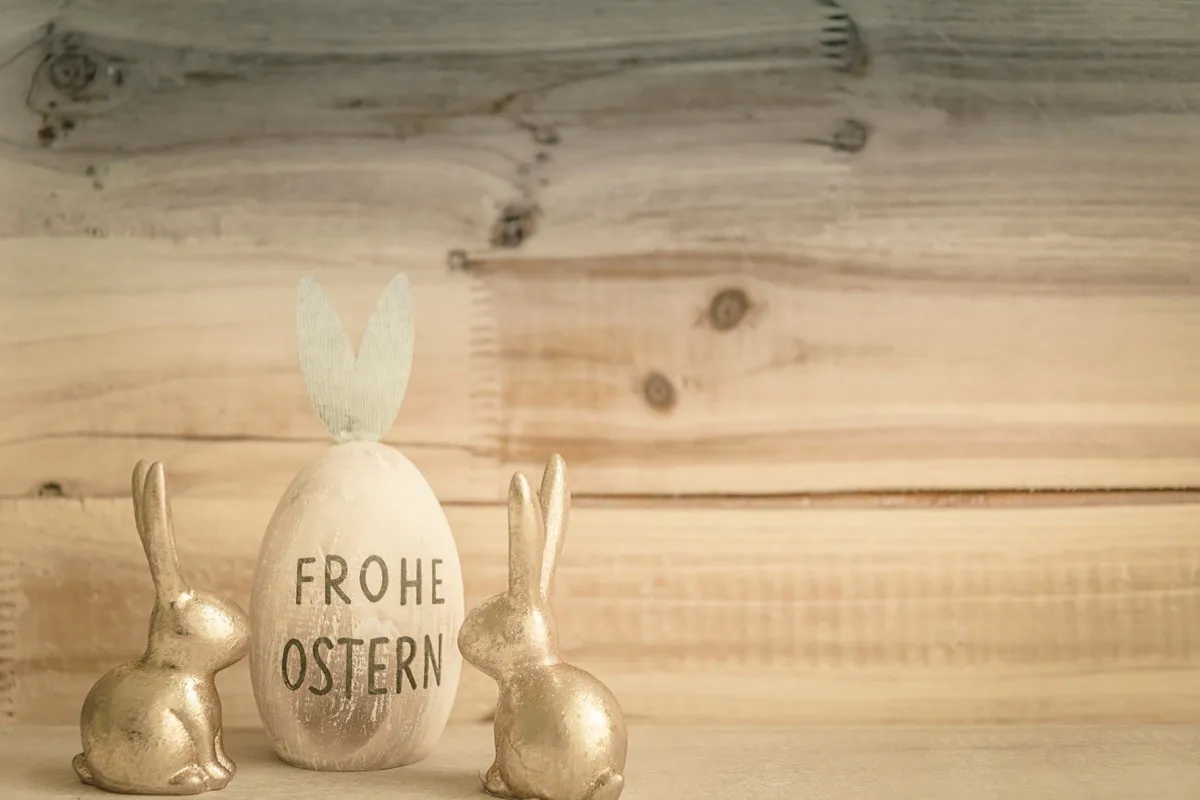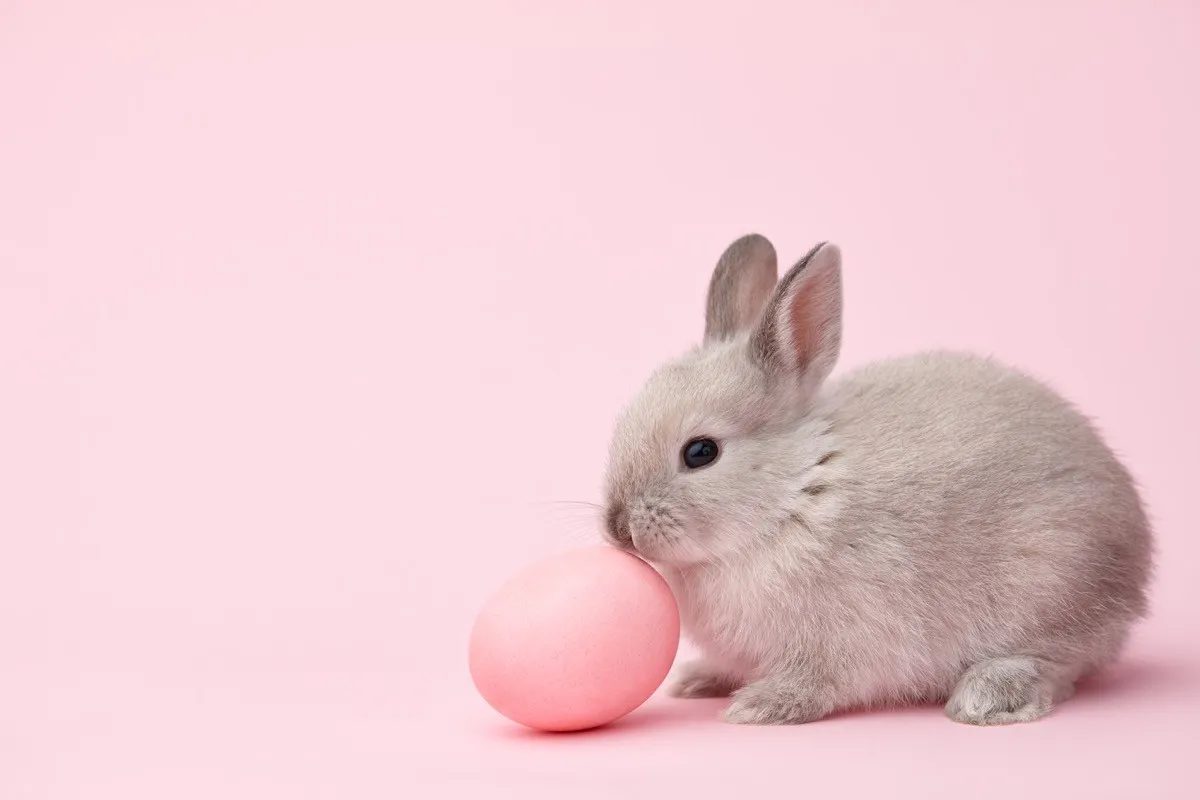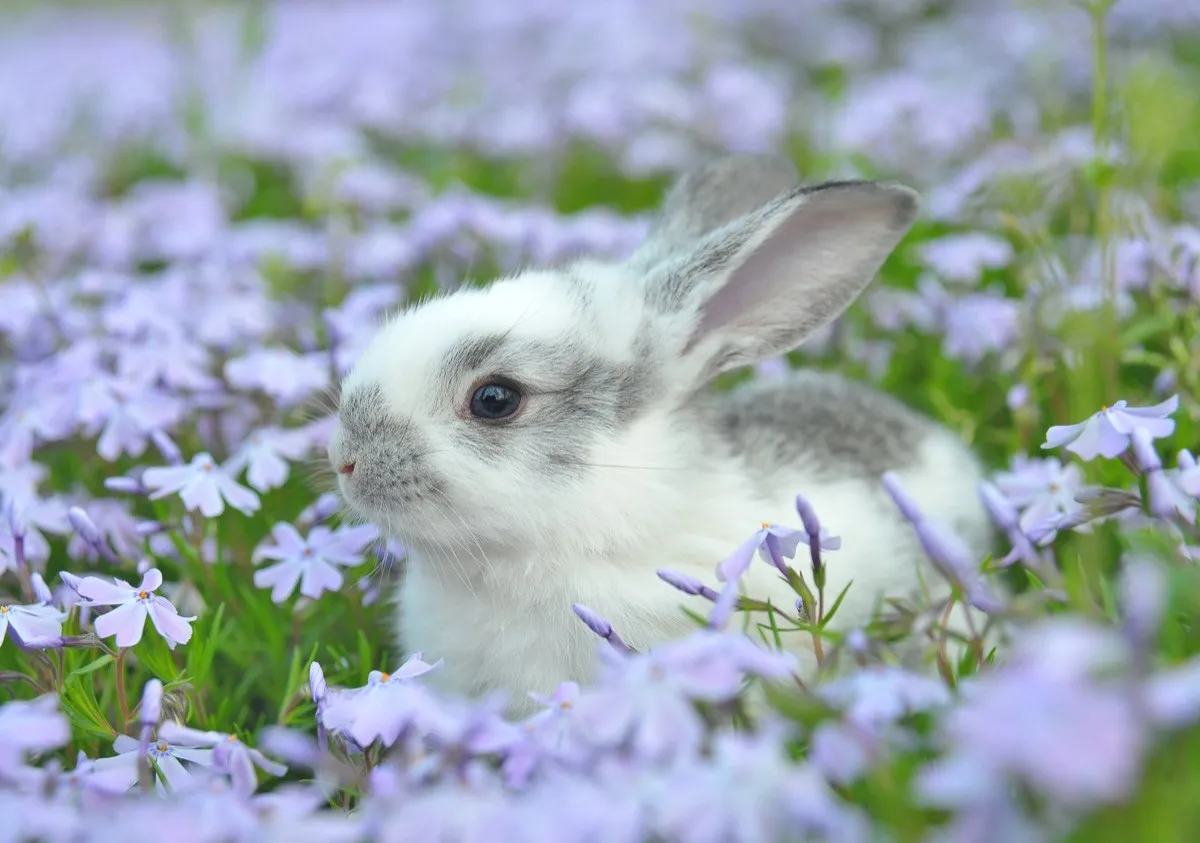15 Fun Easter Bunny Facts You’ve Probably Never Heard

If holiday mascots were musicians in a rock band, Santa Claus would be the lead singer. The Easter Bunny, on the other hand, would be the drummer: Although the adoring public never fails to cheer and head-bang through the drummer’s solo, most fans don’t actually know much about them. Isn’t it time that changed? Whether Easter for you is a devout religious holiday or just another secular-yet-celebratory Sunday, these amazing Easter Bunny facts will help you finally get to know the bunny behind the basket.
1
The Easter Bunny brings in more than $20 billion annually.

Approximately eight in 10 U.S. adults celebrate Easter, according to the National Retail Federation, which says consumers spend an average of $177.06 per person on the holiday, encompassing everything from clothing and candy to cards and flowers. Collectively, it says, Easter spending totals more than $20 billion per year in the United States – $24 billion in 2023 and an estimated $22 billion in 2024. Although the Easter Bunny alone isn’t responsible for all that spending, it definitely deserves at least some of the credit, as 64% of consumers say their Easter shopping is motivated by tradition, 32% a social activity with family or friends, and 29% are motivated by sales and promotions.
2
The Easter Bunny is a German import.

Whether it originally was a product of paganism or Christianity—and more on that later—Americans ultimately have just one group to thank for the Easter Bunny: the Germans.
As early as the 17th century, German folklore references the legend of Oschter Haws, German for “Easter hare.” The mythical rabbit who visited children while they slept rewarded them with colored eggs for their good behavior, which it left in nests that German children made out of hats. When German Lutherans settled in Pennsylvania in the 18th century, they brought their customs—including Oschter Haws—with them. As their traditions spread across the United States, nests eventually migrated from hats to baskets, whose contents gradually grew to include candy and gifts alongside colored eggs.
3
And chocolate Easter bunnies came from Germany, too.

To older kids and adults, the best version of the Easter Bunny might just be the one that’s made of chocolate, wrapped in foil, and sold in stores.
Like the original Easter Bunny, the chocolate Easter Bunny has German lineage: By the 19th century, Easter traditions in Germany had evolved to include cardboard or fabric bunnies that children left out for Oschter Haws, who filled them with candy. At the same time, Germany was becoming an epicenter for chocolate making. It was only a matter of time, then, until Germans had the sweet idea to replace their cardboard candy vessels with chocolate ones.
So the chocolate bunnies likely came from the same German immigrants who brought the Easter Bunny to America via Pennsylvania. In fact, the first American credited with creating a chocolate bunny was Pennsylvanian Robert Strohecker, a drugstore owner who created a five-foot chocolate rabbit as an Easter promotion in 1890.
RELATED: 5 Tips To Have a Healthier Easter, Per Experts
4
Children used to leave carrots for the Easter Bunny.

Although it’s not as common now, German children in the early days of Oschter Haws used to leave out carrots for the Easter Bunny – just as children now leave out milk and cookies for Santa Claus on Christmas.
5
In some countries, the Easter Bunny isn’t a bunny at all.

Easter is a holiday that hops all over the globe. Its mammalian mascot, however, jumps over some countries entirely. Instead of the Easter Bunny, for example, France celebrates Easter with flying church bells. That’s because church bells across the country are silent from Good Friday until Easter Sunday while those who observe the holiday mourn Christ. French children are told that the bells are silent because they’ve sprouted wings and flown to Rome to receive a blessing from the pope. When the bells ring again on Sunday morning, French children find chocolate bells in their homes and gardens that the flying bells are said to have dropped for them while returning home to their respective bell towers.
In Sweden, meanwhile, children believe in Easter witches: According to Swedish lore, it was customary for witches to fly to a legendary mountain on the Thursday before Easter. So, as if it were Halloween, modern Swedish children observe the tradition by dressing up as witches and going door to door wishing their neighbors a happy Easter in exchange for treats.
6
The Easter Bunny is under attack in Australia.

Speaking of international Easter mascots, Australia is a nation divided over its choice. Like Americans, most Australians grew up celebrating Easter with the Easter Bunny. In recent decades, however, Aussies have put the Easter Bunny on notice. That’s because rabbits are not native to Australia. Rather, they’re an invasive species, brought there for hunting in the 18th century by European settlers, whose adorable import has been laying waste to local fauna ever since. In particular, the bilby, a bunny-sized marsupial, has become endangered thanks in part to rabbits that have pushed them out of their burrows.
In order to raise awareness and money for bilby conservation, a group known as the Foundation for Rabbit-Free Australia launched a campaign in 1991 to replace the Easter Bunny in Australia with the Easter Bilby. Although the Easter Bunny is still hopping down under, the bilby population is on the rise. And nearly 30 years later, Australian children are just as likely to eat chocolate bilbies as they are chocolate bunnies.
7
The Easter Bunny’s sex is up for debate.

Here’s something you might not know about rabbits: Because their reproductive anatomy is almost invisible, it’s very hard to tell the sex of young rabbits. As it turns out, it’s equally as difficult to tell the sex of the Easter Bunny. Because it’s often dressed in a vest and bow tie, most people assume he’s a Mister. Since only females lay eggs, however, others insist she’s a Miss. We may never know. But does it really matter? As long as the candy makes it into the Easter basket, we think not!
8
The Easter Bunny represents fertility.

The Easter Bunny’s backstory is as fuzzy as its figure. According to one tale, however, the rabbit’s roots date back to ancient pagan civilizations, which celebrated the arrival of spring each year with a festival dedicated to Eostre, an Anglo-Saxon goddess of fertility to whom hares were sacred animals because of their penchant for overzealous breeding.
As Christianity spread, the story goes, Pope Gregory at the turn of the seventh century instructed the church to embrace some pagan customs in order to make Christianity more palatable to pagan converts. And so, many Christian holidays merged with pagan counterparts. Although some scholars dispute Eostre’s very existence, that purportedly is how the Christian observance of Christ’s resurrection became amalgamated with a spring festival whose mascot was a bunny.
9
It also represents virginity.

Some dispute the Easter Bunny’s pagan origins and argue, instead, that it’s a wholly—or rather, holy—Christian creation. According to Catholicism, the rabbit’s religious origin story starts in ancient Greece, where it was believed that hares had both male and female reproductive organs (likely due to their nearly invisible reproductive anatomy). If this were true (it isn’t, of course), it would have meant that hares could impregnate themselves, and that they therefore were capable of virgin births. This belief supposedly persisted into medieval times, when Christianity was spreading. During this time, rabbits’ virginal attributes allowed them to become associated with the Virgin Mary, who often was depicted alongside bunnies in contemporaneous writings and paintings.
Religious scholars also point to the symbol of the three hares as proof of the Easter Bunny’s Christian conception; although its meaning isn’t known, the symbol—three hares whose ears are intertwined—appears often in medieval Christian art and is thought to symbolize the Holy Trinity.
10
The Easter Bunny doesn’t just bring eggs; it also lays them.

Everybody knows that the Easter Bunny brings colorful eggs for children to find on Easter morning. What you might not realize, however, is that the Easter Bunny actually lays the eggs itself, like a chicken.
To understand why—and how— this came to be, one must return to the aforementioned tale of pagan fertility goddess Eostre. According to one version of the story, hares weren’t just a sacred animal to Eostre, they also were her companions—actually, it was one hare in particular named Lepus (Latin for “hare”).
As the tale goes, winter lasted longer than usual one year because Eostre arrived late. Feeling guilty, Eostre decided to save a bird whose wings had frozen in the late-winter snow. Because the bird, whom she made her pet (or lover, some variants of the legend say), could no longer fly, she turned him into a snow hare named Lepus who was endowed with the ability to lay colorful eggs in remembrance of its avian origins. The only catch: It could only lay its special eggs once a year during the springtime festival of Eostre.
RELATED: 7 Easter Colors and Their Meanings.
11
The Easter Bunny is an Arctic hare.

Have you ever wondered what kind of rabbit the Easter Bunny is? It appears that it’s an Arctic hare, based both on its traditionally white fur and on the pagan lore from which the Easter Bunny hopped (the goddess Eostre’s bird-cum-bunny Lepus was a snow hare). Native to northern Canada and Greenland, Arctic hares are white in the winter so as to blend in with ice and snow, but blue-gray in the spring and summer to match rocks and vegetation. Next to their color, their defining feature is their speed: They can move up to 40 miles per hour, which is obviously how the Easter Bunny gets to every house to deliver the eggs.
12
There are special Easter Bunnies for kids with autism.

Let’s face it: No matter who you are, the Easter Bunny can be terrifying. But it can be especially scary for children with autism or other special needs, for whom sights, sounds, and crowds can be overwhelming.
To make the Easter Bunny more approachable for these children, Autism Speaks partners with Cherry Hill Programs—a provider of seasonal Easter Bunnies to malls and other retail venues—on Bunny Cares, a program wherein it hosts Easter Bunny events for kids with sensory sensitivities. At Bunny Cares events, lights are dimmed and music is lowered. Plus, the activities begin early (before shoppers arrive) and feature a reservation system so families don’t have to wait in line in order to see the Easter Bunny. Although they’re not occurring this year due to the COVID-19 pandemic, events typically take place at nearly 300 shopping destinations across the United States and Canada.
13
The huge majority of rabbits in shelters were purchased as Easter gifts.

The Easter Bunny is a fictional character—and that’s how it should remain, according to the House Rabbit Society, a rabbit rescue group that discourages the gifting of baby rabbits for Easter. Every year, it reports, thousands of baby rabbits are purchased and gifted as personal Easter Bunnies, then subsequently neglected or abandoned. In fact, it’s been reported that as many as 80 percent of all rabbits that are up for adoption at shelters originally were purchased as Easter gifts. By all means, celebrate Easter with the Easter Bunny; but make yours chocolate.
14
The World’s Largest Chocolate Bunny Weighed Over 9,000 Pounds

There have been some large Easter bunnies over the years. But the world record belongs to Brazil in 2017, according to the Guinness World Records, when chocolatier Equipe da Casa do Chocolate created the world’s biggest chocolate bunny – a stunning 14 feet tall and weighing 9,359 pounds. It took eight professionals over eight days to sculpt. Now that candy is going to feed quite a few mouths!
15
Americans Buy Over 90 Million Chocolate Bunnies Each Year

Given about 340 million live in the United States, it’s quite remarkable that 90 million chocolate bunnies are sold each year, according to the USA Today. That means 1 in every 4 Americans – and that’s across all age groups – will buy a chocolate bunny. If a parent buys bunnies for their children, the children don’t count in that statistic, so it’s a stunning stat on the scope of Easter chocolate bunnies in the U.S. They’re everywhere.